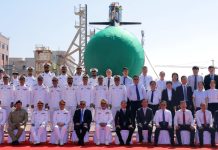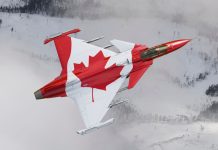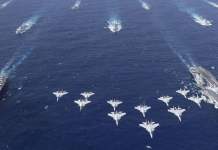US – Sri Lanka relations are progressing via a new path to maintain stronger bilateral ties. US Secretary of State Mike Pompeo, in a message on behalf of the US Government, extend wishes to Sri Lanka which commemorated its National Day.
Sri Lanka – Australia Celebrates 70 Years of Friendly Relations
“The United States remains eager to build on our partnership with Sri Lanka and advance shared interests in the Indo-Pacific region based on our common democratic values. Sri Lanka’s democratic institutions and constitutional processes have ensured your country’s continued advancement,” Mike Pompeo said.
History of US-Sri Lanka Relations
In the post-independence history of Sri Lanka, the two major political parties leaders D.S Senanayake and S.W.R.D Bandaranaike helped in shaping US-Sri Lanka foreign policy.
Since the visit of the US Vice President Richard Nixon in 1953, Sri Lanka has come across a huge change in diplomatic relations with Washington. Richard’s visit is always considered a milestone in shaping the dual foreign policy status. After thirty years, the US attitude towards Sri Lanka has transformed with Sri Lankan President J.R. Jayawardena’s new diplomatic strategy.
During US President Ronald Reagan visit to Sri Lanka, Jayawardene said: “Sri Lanka is an example of independent people determining their own destiny and a country which the United States is proud to count among its friends”. The friendly gesture of Sri Lankan President towards the American President intensified the diplomatic collaboration between the two nations.
After the significant visit, the bilateralism maintained economic relations between the two nations. This invited the trade incentives from America to Sri Lanka. The incentives involved a big change in Sri Lanka’s apparel sector. This shifted Sri Lanka’s economy from being agriculture centric to apparel centric. More than 200 apparel factories were started providing employment opportunities for more than 300,000 Sri Lankans in the early 1990s.
Both USA and Sri Lanka examined the face of diplomatic relations. The two-way diplomacy has not always been stable. In 2013, Sri Lanka’s relations with the Americans were seriously affected due to numerous reasons. Despite several delays, US-Sri Lanka relations have come a long way. Therefore, the stalemate situation in the diplomatic endeavours changed within days after Sri Lanka’s new government came into power in 2015.
Today, the US is the largest trading partner of Sri Lanka. Presently, the two-way trade is closer to 3.2 US billion dollars. As per data released by the Sri Lanka Export Development Board (SLEDB), the apparel exports to the US was over US$ 2.2 billion (SLEDB, 2019).
Sri Lanka’s biggest advantage its geographical location linking east and west maritime routes in the Indian Ocean. There are multiple reasons behind the relevance of island nation which provides access to 1.6 billion Indian subcontinent consumer and producer market through the South Asian Free Trade Area (SAFTA). Hence, investors of both the US and Sri Lanka can collaborate to build more suitable environment for trade.
The bilateral defence policies were initiated during the former President Barack Obama’s tenure. Sri Lankan Defence Ministry says that “The inaugural defence dialogue between the US and Sri Lankan armed forces in 2016 was a groundbreaking collaboration”.
Since 1956, the United States has provided over 2 US billion dollars worth of development assistance to Sri Lanka. The current US Ambassador to Sri Lanka Alaina Teplitz said: “For seven decades, the United States has supported Sri Lanka on its path to peace and prosperity “. The former American President, H.W. Bush and Bill Clinton visited the island nation to gain firsthand information of the post-tsunami recovery efforts.
The Sri Lankan government can take significant steps to boost existing foreign policy in relation to the United States. The structural changes may bring more recognition for Sri Lankans among the US foreign policy makers. The US-Sri Lanka’s policymakers bipartisan approach can evolve into the strategic partnership between the two nations.
More News at EurAsian Times
- Indian Military Base in Vietnam To Protect Hanoi’s Territorial Interest
- Indian Military Base in Sabang can Strangle China at the Strait of Malacca
- Saudi Money, US Weapons, Israeli Intelligence Fuelling Arab NATO – Iran
- Will Ayni Airbase in Tajikistan Become India’s 1st Overseas Military Base?
- Indonesia Opens Another Military Base at Natuna Islands To Counter Aggressive China




